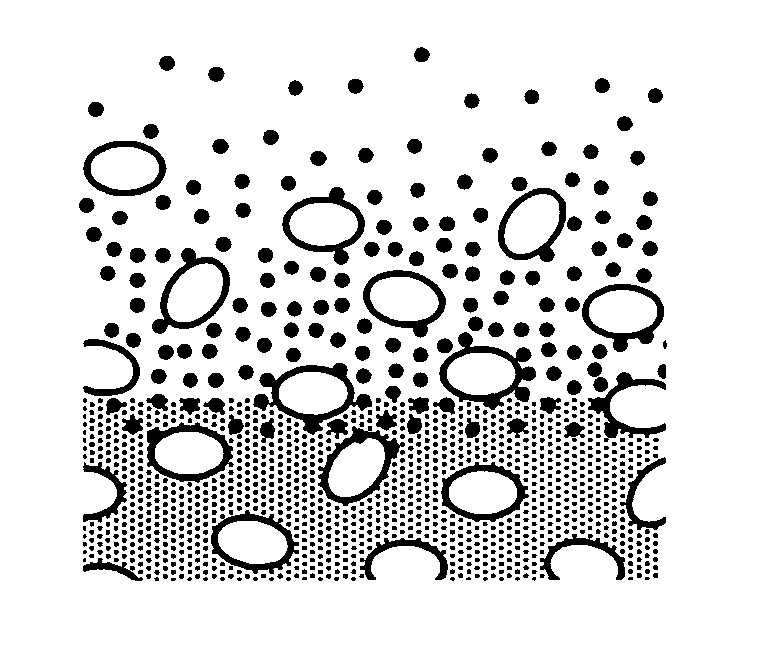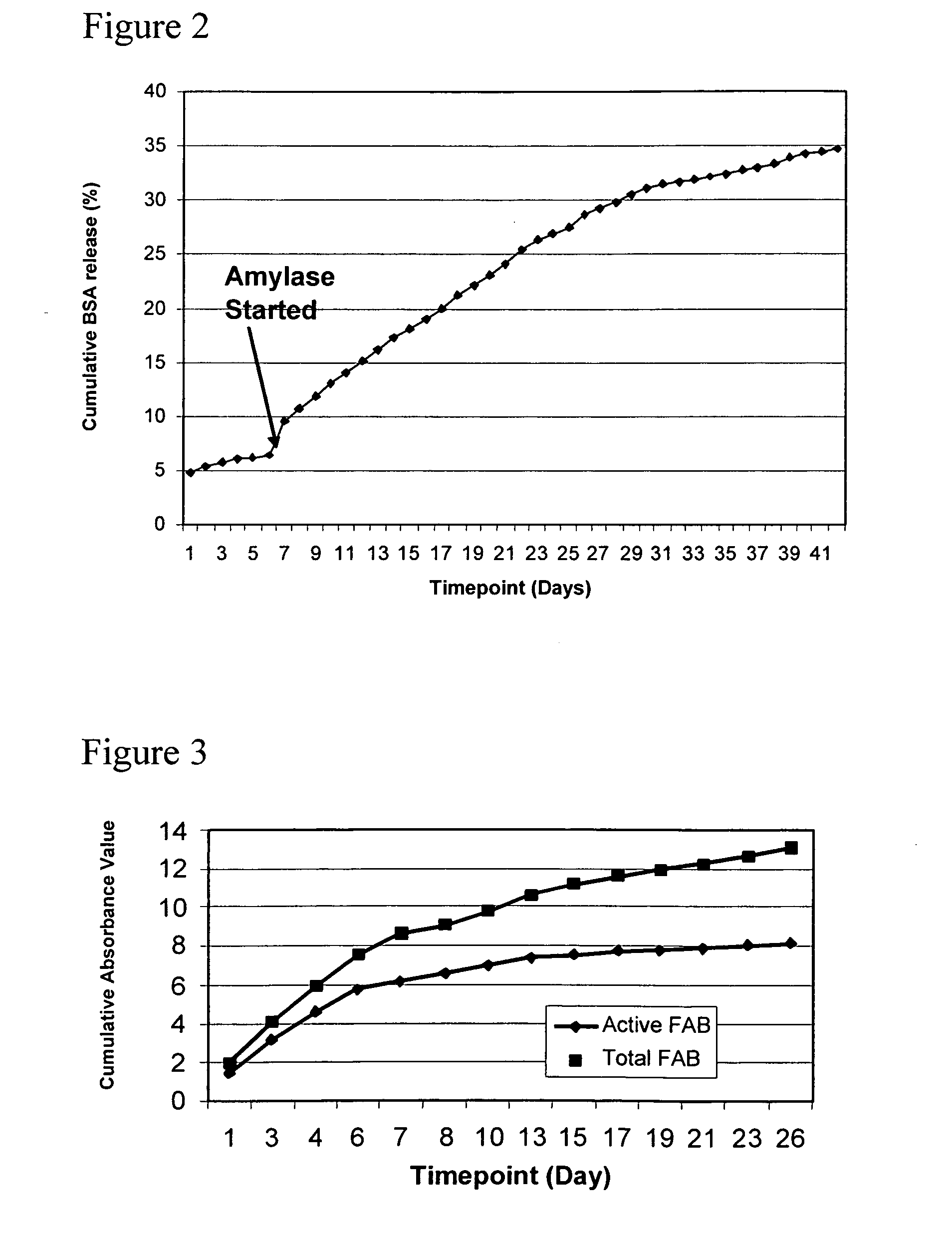Latent stabilization of bioactive agents releasable from implantable medical articles
a bioactive agent and latent stabilization technology, applied in the direction of pharmaceutical delivery mechanism, prosthesis, coating, etc., can solve the problems of increasing the risk of complications, patient discomfort, limitations of drug injection, etc., to improve the stability of bioactive agents, less bioactive agents, and the effect of latent stabilization
- Summary
- Abstract
- Description
- Claims
- Application Information
AI Technical Summary
Benefits of technology
Problems solved by technology
Method used
Image
Examples
example 1
Synthesis of acrylated-amylose
[0207]Amylose having polymerizable vinyl groups was prepared by mixing 0.75 g of amylose (A0512; Aldrich) with 100 mL of methylsulfoxide (J T Baker) in a 250 mL amber vial, with stirring. After one hour, 2 mL of triethylamine (TEA; Aldrich) was added and the mixture was allowed to stir for 5 minutes at room temperature. Subsequently, 2 mL of glycidyl acrylate (Polysciences) was added and the amylose and glycidyl acrylate were allowed to react by stirring overnight at room temperature. The mixture containing the amylose-glycidyl acrylate reaction product was dialyzed for 3 days against DI water using continuous flow dialysis. The resultant acrylated-amylose (0.50 g; 71.4% yield) was then lyophilized and stored desiccated at room temperature with protection from light.
example 2
Synthesis of MTA-PAAm
[0208]A polymerization initiator was prepared by copolymerizing a methacrylamide having a photoreactive group with acrylamide.
[0209]A methacrylamide-oxothioxanthene monomer (N-[3-(7-Methyl-9-oxothioxanthene-3-carboxamido)propyl]methacrylamide (MTA-APMA)) was first prepared. N-(3-aminopropyl)methacrylamide hydrochloride (APMA), 4.53 g (25.4 mmol), prepared as described in U.S. Pat. No. 5,858,653, Example 2, was suspended in 100 mL of anhydrous chloroform in a 250 mL round bottom flask equipped with a drying tube. 7-methyl-9-oxothioxanthene-3-carboxylic acid (MTA) was prepared as described in U.S. Pat. No. 4,506,083, Example D. MTA-chloride (MTA-Cl) was made as described in U.S. Pat. No. 6,007,833, Example 1. After cooling the slurry in an ice bath, MTA-Cl (7.69 g; 26.6 mmol) was added as a solid with stirring to the APMA-chloroform suspension. A solution of 7.42 mL (53.2 mmol) of TEA in 20 mL of chloroform was then added over a 1.5 hour time period, followed by a...
example 3
Preparation of 4-bromomethylbenzophenone (BMBP)
[0211]4-Methylbenzophenone (750 g; 3.82 moles) was added to a 5 liter Morton flask equipped with an overhead stirrer and dissolved in 2850 mL of benzene. The solution was then heated to reflux, followed by the dropwise addition of 610 g (3.82 moles) of bromine in 330 mL of benzene. The addition rate was approximately 1.5 mL / min and the flask was illuminated with a 90 watt (90 joule / sec) halogen spotlight to initiate the reaction. A timer was used with the lamp to provide a 10% duty cycle (on 5 seconds, off 40 seconds), followed in one hour by a 20% duty cycle (on 10 seconds, off 40 seconds). At the end of the addition, the product was analyzed by gas chromatography and was found to contain 71% of the desired 4-bromomethylbenzophenone, 8% of the dibromo product, and 20% unreacted 4-methylbenzophenone. After cooling, the reaction mixture was washed with 10 g of sodium bisulfite in 100 mL of water, followed by washing with 3×200 mL of wate...
PUM
| Property | Measurement | Unit |
|---|---|---|
| period of time | aaaaa | aaaaa |
| period of time | aaaaa | aaaaa |
| period of time | aaaaa | aaaaa |
Abstract
Description
Claims
Application Information
 Login to View More
Login to View More - R&D
- Intellectual Property
- Life Sciences
- Materials
- Tech Scout
- Unparalleled Data Quality
- Higher Quality Content
- 60% Fewer Hallucinations
Browse by: Latest US Patents, China's latest patents, Technical Efficacy Thesaurus, Application Domain, Technology Topic, Popular Technical Reports.
© 2025 PatSnap. All rights reserved.Legal|Privacy policy|Modern Slavery Act Transparency Statement|Sitemap|About US| Contact US: help@patsnap.com



